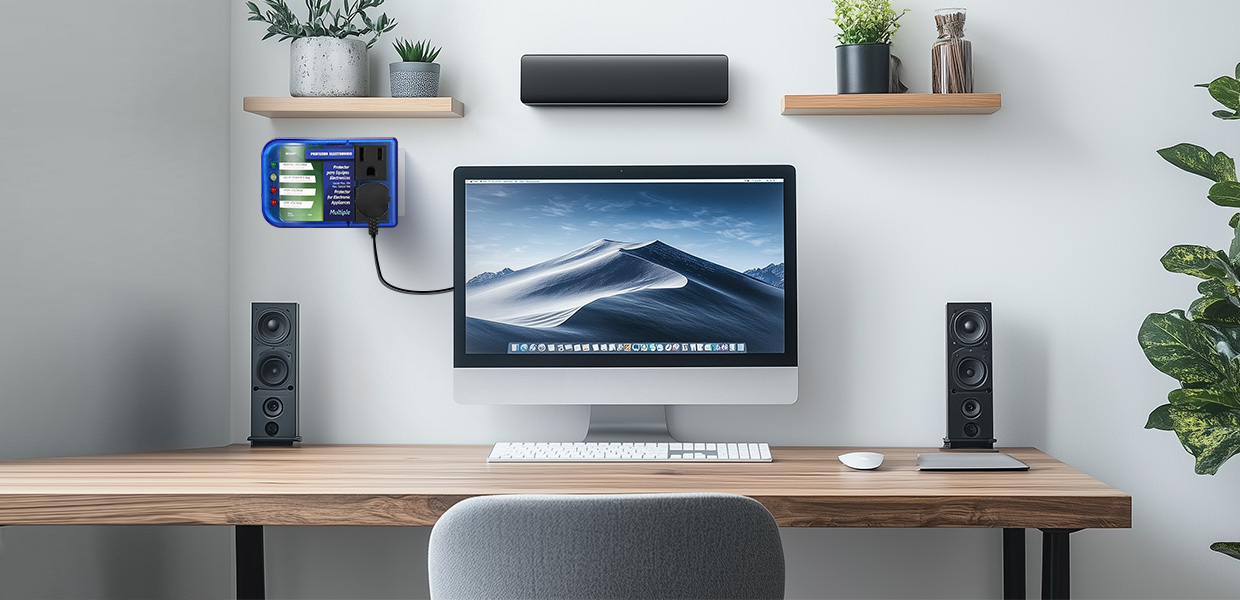Surge protectors: A must-have surge protection guide for users on the East Coast of North America
Date:2025-02-24 Click:695
Extreme weather is not frequent on the East Coast of North America, but sudden thunderstorms or power grid fluctuations may cause irreversible damage to electronic devices. Many users, like you, have connected devices like desktop computers to surge protectors, but they still worry: "Is this safe enough?" This article will analyze why surge protectors are necessary and how to maximize their protection effects based on scientific principles, practical scenarios, and protection strategies.
1. Surge threats: invisible device killers
1. Natural factors: lightning strikes (even if the wires are not directly hit, electromagnetic induction will produce high-voltage pulses).
2. Human factors: grid switching, start-up, and stopping of large electrical appliances (such as air conditioners and elevators).
3. Equipment aging: voltage instability caused by equipment failure or line aging of power companies.
Data support:
The average household experiences about 20 small surges per year, which are not easy to detect, but will gradually shorten the life of the equipment. A surge caused by a strong thunderstorm may even burn out an unprotected computer motherboard in an instant.

2. How does a surge protector work?
1. Primary filtering: intercept nanosecond-level tiny pulses (daily power grid fluctuations).
2. High-voltage shunt: when encountering a kilovolt surge such as a lightning strike, the excess current is directed to the ground wire.
3. Self-sacrifice: MOV components will gradually degrade after absorbing surges many times, and finally trigger an alarm prompting replacement before failure.
Key indicators:
- Joule Rating: Users on the east coast of North America recommend choosing models with more than 2000 joules.
- Clamping Voltage: It can better protect sensitive equipment when it is less than 400 volts.
3. Special considerations for users on the East Coast of North America
1. Seasonal thunderstorms: Thunderstorms are frequent during the summer hurricane season (June-September). Even if you are far away from the lightning strike point, electromagnetic induction within 10 kilometers can still cause surges.
2. Old power grids: The average age of power grid facilities in some East Coast cities is over 50 years, and the risk of voltage fluctuations is higher than the national average.
3. High-value equipment: The maintenance cost of equipment such as desktop computers, game consoles, and 4K TVs far exceeds the investment in surge protectors (about $20-$80).
User misunderstanding correction:
- "Unplugging is safest": Although it can completely isolate surges, frequent daily plugging and unplugging may damage the interface and cannot cope with sudden grid fluctuations.
- Optimal strategy: Connect the device to a surge protector and unplug it only during extreme weather warnings (such as before a Category 4 hurricane lands).
4. How to choose and maintain a surge protector?
- Parameters suitable for North American voltage (such as 120V system).
- Choose with LED status indicator and warranty service.
- Multi-device users need to pay attention to the number of sockets and independent filtering channels (to avoid signal interference).
2. Maintenance Recommendations
- Replace the surge protector every 2 years (MOV components will age).
- Avoid connecting multiple protectors in series, which may cause the clamping voltage to overlap.
- Regularly test the ground wire (using a socket tester) to ensure that the current is effectively discharged.
Conclusion: Double protection, foolproof
For users on the East Coast of North America, surge protectors are the first line of defense against daily surges, and "unplugging" before extreme weather is additional insurance. Investing in a high-joule-rated, UL-certified surge protector can not only extend the life of your equipment but also avoid the catastrophic consequences of data loss. Check the status of your protector now - is it still silently protecting your digital life?

